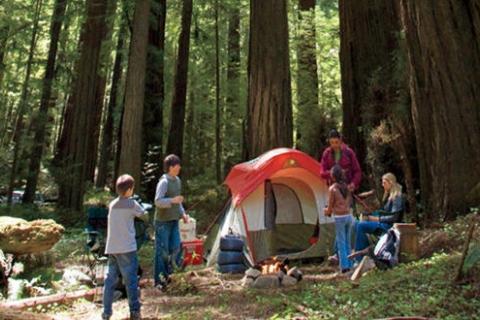
When it comes to buying a tent, you can trust my advice. I have learned important lessons after years spent field-testing every variety imaginable, from teeny floorless pup tents to extravagant luxury models larger and better outfitted than some homes I have owned.
Lesson one: Buy a tent with a floor. If you don't, unexpected guests could ruin your campout. I've awakened to find everything from copperheads to fire ants and skunks sharing my sleeping space.

make sure and do your research.
Lesson two: Buy a tent with a door and screened windows that can be zipped up. Refer to lesson one.
Lesson three: Buy a tent appropriate for the season in which you'll be camping. This was another lesson difficult for me to grasp. I have gotten frostbite in tents made for summer camping, and been nearly asphyxiated by heat and lack of circulation in tents manufactured for polar explorers.
Lesson four: Read what follows before buying a tent. Benefit from my broad range of experience. Buying a tent isn't rocket science, but as I've proven time and time again, it's not a purchase one should take lightly.
What Size Tent do You Need?
Choosing a tent that's the perfect size can be tricky because people vary in their comfort levels and in the amount of stuff they carry around. Experts recommend an absolute minimum of 12 square feet of floor space per person, which is barely enough room to stretch out and sleep. To accommodate camping supplies, clothing and the like, figure 20-25 square feet per person, if your activities (backpacking, car camping, etc.) are suited to a tent that size. If you're a multifaceted camper, you may require different tents of different sizes for different activities.
I learned long ago that the floor diagrams and height measurements provided by manufacturers can be misleading. These usually indicate nothing more than how many average-sized campers can wedge themselves inside and try to sleep in a human puppy-pile. For a sure fit, have the seller set up the tent and allow you to get inside to check it out. Is there room to sit up, stand up and move around in a manner you'll be comfortable with? Is the interior space adequate for your needs? Do the tent's shape (dome, A-frame, etc.) and interior configuration (high walls, slanted walls, etc.) allow maximum use of the living space? Be sure before buying.
It's also wise to snoop along the seams. Many tents come with taped seams, which saves you the nasty chore of slathering seams with sealer goop. If the seams are not bound, sealed or taped, then read the instructions for the manufacturer's recommended seam sealer. Do the job on a dry day in an airy location, and allow the sealer to cure a full 48 hours before stowing or using the tent.
Tents and Seasonal Considerations
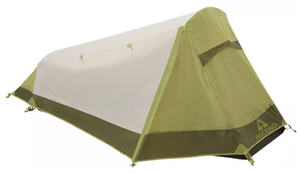
Three-season tents are the most common on today's market. These are designed for use in spring, summer, and fall. They have good ventilation for camping during warmer months, and usually have mesh windows with covers that can be zipped closed when the weather is cooler. The design of these tents allows them to withstand strong winds and rain. Backpackers and car campers generally choose a three-season tent.
If you plan to camp often in winter, in locales where high winds are prevalent or anywhere your mettle might be tested by less than favorable weather, consider a four-season, or mountaineering, tent. These are designed to withstand extreme conditions year-round. Extra poles, zip-down windows, and extended rain flies allow adjustments for added summer ventilation, and greater warmth and stability in winter weather. These tents tend to be more expensive, however, and often heavier than three-season alternatives.
Lightweight, highly ventilated summer tents are great for hot, dry nights, but they aren't very versatile when temperatures drop or rain hits. Avoid these unless your camping is restricted to desert realms.
Backpackers use tents that are as light as possible, yet still need durability.
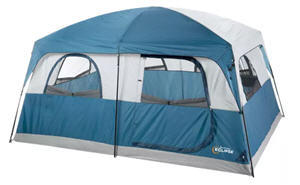
Tent
Whatever you buy, be sure the fabric is flame-retardant. In California, and possibly some other states, the law requires all tents sold to be thus treated. In other areas, however, the tent you purchase may not be flame-retardant unless you check. I have learned the desirability of this feature on no less than five occasions, when sparks or flames from campfires--and in one case, a flaming marshmallow--ignited my tent fabric. The resulting conflagrations were frightening, dangerous, embarrassing, and a host of other adjectives. For your own safety and that of your fellow campers, buy a tent made with flame-retardant fabric.
Further Define Your Needs for the Perfect Tent
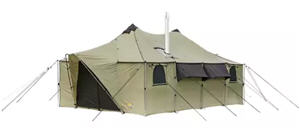
The carrying weight and packed size of a tent also are of prime importance to most outdoor enthusiasts. Three-season tents that accommodate two to three people usually weigh four to nine pounds. (The weight is given by the manufacturer on the tent's hang tag and should include tent body, rain fly, poles and stuff sack..) Small, ultralight solo shelters (often called bivy sacks) have bare essentials and weigh as little as one or two pounds. Family, cabin and expedition or outfitter tents often weigh more than 20 pounds.
Choose a model proper for your needs. Will you be trekking solo when the weather is likely to be fair? Then a bivy sack and tarp may suffice. Will you be backpacking? If so, weight and ease of setup are important. Fair-weather hikers won't want to lug a heavy, blizzard-bearing mountain tent, and in rugged alpine country, you don't want a light-duty shelter that can get trashed in short order. Family campers may want to trade off pack-ability for more floor space.
Generally, lighter is better, but don't sacrifice important features to save a few ounces. Manufacturers often reduce tent weight by using fewer zippers (hence fewer openings), fewer and lighter poles, and smaller rain flies and storage vestibules. That can cause problems in situations where these accessories are beneficial.
Easy Assembly Tent Poles
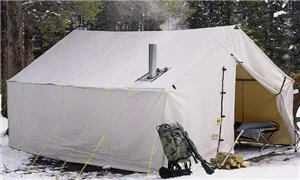
Unless you can work a jigsaw puzzle in the dark, be sure the tent you purchase, regardless of the model, has poles that are shock-corded for easy assembly. These have an elastic cord or chain running through the individual sections of each pole, allowing them to be put together in a snap, even in the dark. Tents with poles that don't have this feature can be frustratingly difficult to assemble.
Remember, too, that cheap tents often come with flimsy poles that may bend or break when stressed during a rainstorm, snowfall or windy conditions. You'll be better served if you invest more money on a quality tent with quality poles, which usually are made of lighter, stronger carbon fiber or aluminum, not fiberglass. Being awakened in the middle of a stormy night by a collapsed tent is no fun, as I can fully testify.
You also should check to make sure the pole sleeves are easy to thread (continuous sleeves are the easiest). Tents with clips that fasten the poles to the tent body are faster to set up than those with sleeved poles, but you'll sacrifice strength in bad weather.
Tips on Tent Care
Having slept in many tents that were mildewed, leaking and falling apart, I also can comment on proper tent care, a moderate amount of which will allow your tent to last many seasons. Here are the basics:
- Sweep out all refuse and remove dirt with a damp cloth. Then allow your tent to dry completely before you pack and store it, even if you have to pitch it again when you return home.
- Sun will eventually cause a tent to deteriorate, so if possible, camp in the shade to avoid harmful ultraviolet rays. It also helps to leave your rain fly on during the day. Rain flies are cheaper to replace than entire tents.
- Tent floors can wear out, so use a ground tarp when possible. Thin polyethylene sheeting from a hardware store is a lightweight, inexpensive option.
To wrap things up, I offer one final suggestion. Be sure you can set up your new tent for the first time, in the dark, with no instructions. If you can, it's a good design. If not, look for a more fussless model.
An average camper can erect the average tent in five or ten minutes, but there are exceptions, like the sultry August night a friend and I went river camping. The air was dead still, and the mosquitoes were horrible. We tried our darnedest to set up my friend's tent before being eaten alive, but our accumulated experience and advanced degrees were no match for the designer's convoluted fantasy.
"It can't be that hard," my friend said. "My wife set it up by herself the last time we went camping."
Bottom line: if the skeeters are swarming or it's threatening a deluge, head-scratching is the last thing you want to be doing.
Good luck, and may your tent always keep you cozy.
- 10342 views

